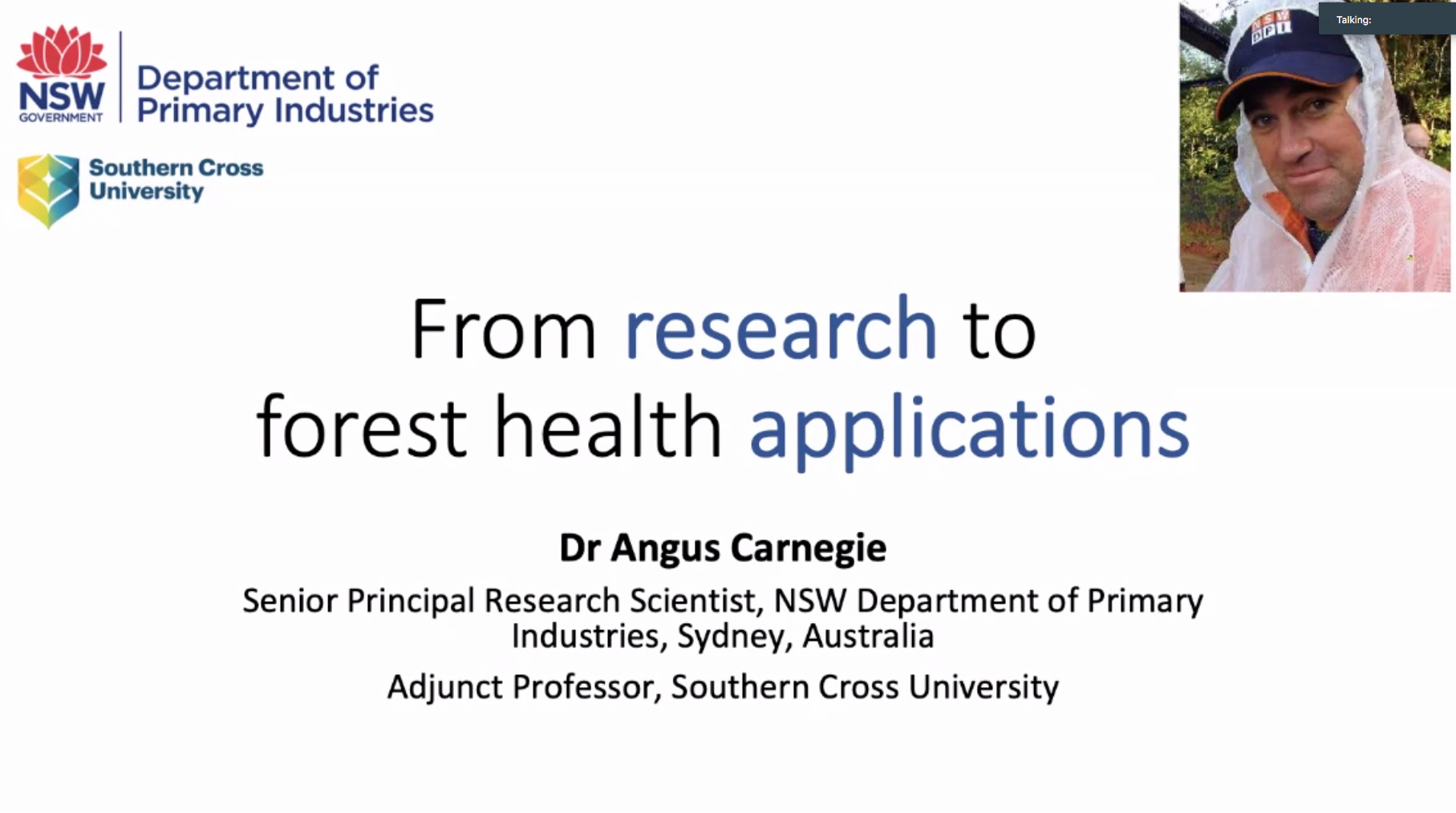Panel discusses the merits of ongoing monitoring in tree health research at the annual meeting of the TPCP and CPHB 2020-05-18
Members of a panel highlighted the essential contributions of fundamental research in efforts to maintain healthy plantation of trees. They also emphasised the importance of continuous monitoring as an integral tool in managing insect pests and pathogens. Dr Angus Carnegie, who leads the Forest Health Survey Unit in the Department of Primary Industries in New South Wales, Australia, set the tone for this discussion during the annual meeting of the Tree Protection Co-operative Programme (TPCP) and the DSI-NRF Centre of Excellence in Plant Health Biotechnolog (CPHB) on 12 May.
The meeting was held online for the first time since the establishment of the two programmes due to travel restrictions arising the global COVID-19 pandemic. Dr Carnegie showed how research using remote sensing and machine learning had led to the production of detailed maps of pest outbreaks that plantation growers could use to target areas of concern. He also illustrated the value of burn-intensity maps to help manage fires. Dr Carnegie made the point that “other people’s research” had, for example, aided in monitoring of Ips bark beetle populations. Importantly, this insect and its blue-stain fungal associates had reduced the efficacy of the parasitic nematode biocontrol agent used to reduce the impact of the Eurasian wood wasp, Sirex noctilio.
Izette Greyling, a forest health specialist at Mondi, said “proactive” monitoring was important to reduce losses to plantations due to pests and diseases. TPCP Diagnostic Clinic manager Dr Trudy Paap said diagnostics was much easier when dealing with known pests and pathogens. She added that the clinic team had observed more opportunistic pests and pathogens causing extensive damage in the field during the past year. Field extension officer of the TPCP, Darryl Herron emphasised that effective and regular communication with the forestry community was important and added that, foresters appreciated regular feedback from researchers.


